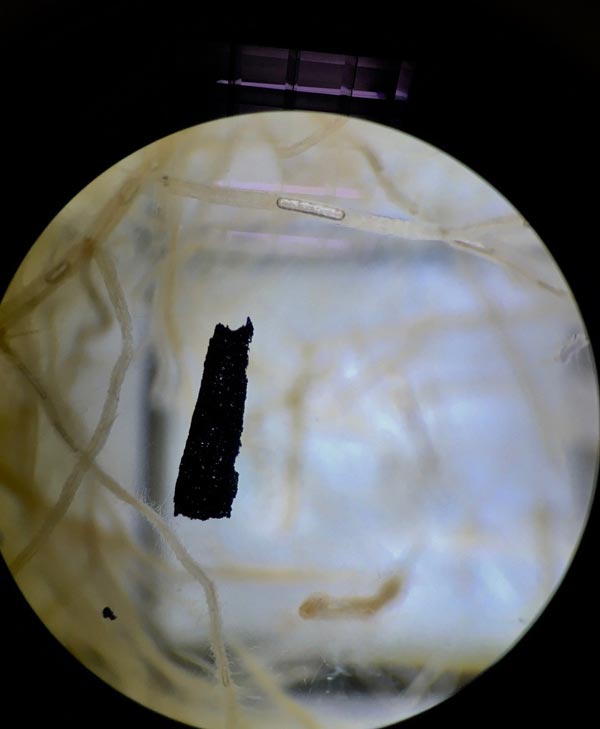Tasmania Fieldtrip: Report from visual artist Heather Hesterman
As a part of GEOG30025/90027 Biogeography & Ecology of Fire, visual artist Heather Hesterman has reported about her experience on a fieldtrip to Tasmania.
16 – 23 Jan in Tasmania and with Lab work 25 Jan-07 Feb 2019.
On the 16 January I went with Dr Michael-Shawn Fletcher along with many excited students to participate in a fieldtrip to Tasmania. This was an adventure for me, from a visual artist perspective, to observe and be involved in geographer’s ‘work in the field’. What sort of data does a biogeographer collect? And how relevant is fire in Tasmania? Actually, fire was an ever-present force throughout this trip.
When we arrived, Tasmania was alight with 1000’s of lightning strikes and many hundreds of fires burning. We departed Mount Kunai quickly, after an informative pyro-talk by Prof David Bowman. At Mt Field, the sky was an uncanny golden colour due to smoke, and discussions with the group concerning vegetation, current firefighting methodology and Indigenous fire management techniques had a deeper resonance. The forested tree canopies (that we saw throughout the trip), with trunks partially covered with green lichens and mosses were surprisingly dry and brittle to touch, due to a lack of water. The whole state was experiencing a dry summer. Understanding more about physical geography at a planetary and local scale was fascinating, especially seeing a ‘grooved erratic’ at Henty Glacial Moraine Reserve.
At Surry Hills Forest Reserve we encountered sites and nature, with idyllic names such as ‘Dairymaid Plain’, ‘Romney Marsh’, ‘Racecourse Plain’ and ‘Buttongrass’. Some of the tasks were to collect vegetation and soil samples, tree cores (dendroecology) and map the selected sites via transect and quadrant analysis. Taking soil core samples in the middle of a marsh/bog area for a whole day appeared hot and daunting work, and yet seeing the dark brown and blue/grey clay possibly from the last ice-age was exciting to see firsthand. These collected soil and tree-core samples may reveal hidden information about past climates, past lives and frequency of fire.
The students who participated in this subject were an amazing bunch of individuals; committed, engaged, inquisitive, friendly, generous and fun. They climbed Cradle Mountain and saw clouds created by the fires below. Although I didn’t see the Labwork in action, I was kindly sent images by students, who captured a picture through the microscope of what I imagine to be a piece of burnt vegetation. This is possibly historic evidence that fire has been ever present at these sites, with Aboriginal people managing vegetation through routine burnings.
How this trip will be processed and synthesised visually is still unknown, as there is much information to absorb and research, however fire will possibly be a key feature.
Many thanks go to Dr Jane Dyson, Scott Nichols, Dr Amy Hessl and Darren Hocking. A special thanks also to Dr Michael-Shawn Fletcher for having me along for the ride.
Find out more:
Heather Hesterman lecturers at RMIT University School of Art and has created GreenLab for Shepparton Museum of Art as part of their education lab for 2019 sponsored by La Trobe University, 28 Feb – 7 April. This participatory installation, workshops and exhibition survey: multiples is part of Climarte’s 2019 festival.